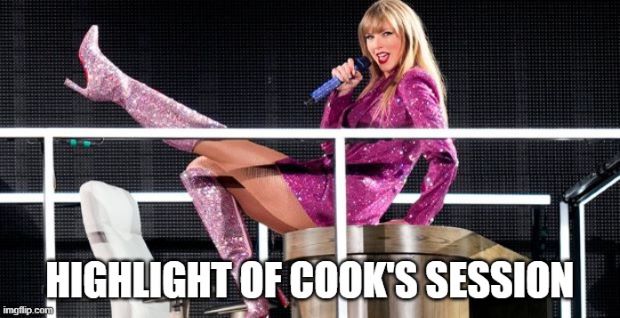TUCSON, Ariz. — It was only in the low 90s, but a bona fide swelter had set in across Tucson by 9:45 a.m. on June 28, if the sights at Reid Park were any indication.
Parking lots were strewn with cars that had picked off all the spaces under the shade of mesquite and palo verde trees. Outdoor workers who had little choice for reprieve from the heat donned long-sleeved shirts and wide-brimmed caps and kept handy their oversized jugs of water.
Not-so-early-bird joggers slogged through 30% humidity, brought on by the monsoon, while their dogs panted profusely.
And just inside a gated area at the park sat a pair of trucks that appeared to be plucked from the set of the 1996 movie "Twister." Nearby, a crew of researchers set up a slate of specialized climate-monitoring instruments.
The crew, from the U.S. Department of Energy-sponsored Brookhaven National Laboratory, had just arrived in Tucson for six days of field research for the Southwest Urban Corridor Integrated Field Laboratory, known as the SW-IFL. The $25 million federal project,
which the Department of Energy announced in 2022
, aims to better understand how extreme heat affects communities across the Southwest.
The project includes research teams from all three state universities in Arizona, as well as partnerships with the city of Tucson, Pima County, the National Weather Service and others.
Ladd Keith
, an associate professor in the School of Planning and Landscape Architecture, leads the University of Arizona's slice of the work. That will largely involve translating the climate data collected in neighborhoods around Tucson and Phoenix into actionable guidelines that local governments around the country can use to help their communities respond to the effects of extreme heat.
Last year, heat-related deaths in Arizona reached 987, a record high. In Phoenix specifically, heat-related deaths in 2023 were up 52% over 2022. But the problem is global, Keith said, pointing to a May
report by Climate Central
that concluded human-caused climate change was a major factor in extreme heat around the world over the last year.
Extreme-heat events are also more intense and longer-lasting, Keith added. A recent heat wave in Mexico likely killed more than the official count of 125 people and was made 35 times more likely to happen due to climate change, according to
a report co-authored by Keith
and published by World Weather Attribution, a global collective of climate scientists.
But governments across the U.S. and around the world have only recently begun to seriously consider ways to prevent the harmful and deadly effects of heat. Heat governance, as it's called, is slowly being adopted and implemented by governments across the country.
"The goal with this project is to do science that improves the resilience of communities in our state to increasing heat," Keith said. "The U of A's role in this partnership is critical because we have the expertise of working with community partners and translating that science into action that communities can use to make better decisions."
Filling in the Southwest's 'data deserts'
The Brookhaven team's arrival in Tucson with their trucks and balloons – after a 2,500-mile trek from their home base on Long Island, New York – was likely the first time that any group in Tucson has taken neighborhood-level climate measurements in such detail.
"These are very specialized tools that allow us to further explore a localized area of the built environment," Keith said. "We've done localized climate data collection before with relatively affordable equipment, but not to the level of detail that this equipment allows us to look at."
Katia Lamer, director of Brookhaven National Laboratory's Center for Multiscale Applied Sensing, manages research conducted with the mobile lab trucks. As Tucson soaked up a monsoon rain one recent evening, Lamer's team snaked their trucks through midtown neighborhoods.
A lidar instrument used lasers to measure a variety of data, including ground and air temperature, pollution particles and more. The raindrops, it told researchers, were falling as fast as 8 meters (about 26 feet) per second. A Doppler instrument measured air particles' movements, providing windspeed. A fisheye lens pointed directly upward took images of the cloud cover.
Other instruments tracked air and land temperature, humidity and more. The data flashed across a laptop screen mounted in the truck's back seat.
The instruments allowed researchers to measure many aspects of the lower atmosphere at any given time or place. Weather stations installed at airports across the country simply can't collect data this localized and this specific to residential neighborhoods, Lamer said.
"We're the only group that has these instruments running while we're driving, so we're collecting climate data as we go, with the goal of collecting data when and where it's needed," Lamer said. "We're filling in these data deserts."
Partnerships help tell 'a complete story' about heat
The team's routes had been pre-determined in partnership with the city, U of A researchers and other project partners. They took researchers to neighborhoods where the city plans to add rainwater infrastructure to get before-and-after data snapshots. The trucks also passed over streets where the city has used more reflective pavement to trap less of the sun's heat.
The route also included neighborhoods where
Mark Kear
, an assistant professor in the School of Geography, Development and Environment and another researcher on the Southwest Urban Corridor Integrated Field Laboratory, has partnered with residents to monitor the climate data of 40 Tucson households over the summer.
Kear's research focuses primarily on manufactured homes, whose owners and renters see a much higher rate of heat-related deaths than traditional single-family homes, he said. The quickest period of growth in manufactured housing across the U.S., Kear said, happened in the early 1970s, before federal regulations were put in place to ensure those homes were built safely.
Many homes from that era are still standing and have inadequate insulation and other issues that make some residents more vulnerable to the heat. Many of their occupants, Kear said, are low-income families.
As part of the Southwest Urban Corridor Integrated Field Laboratory, Kear's work as a social scientist complements the work of climate scientists like Lamer and her team, giving a fuller picture of how heat impacts certain people, especially those most vulnerable.
"The idea is that we can bring these different data types together to tell a complete story so that I can understand more effectively what is making it so hard for these low-income families keep their homes cool," Kear said.
The trucks aren't the team's only tools to gather data. Lamer's team also uses balloons to launch instruments that can collect much of the same data as the trucks, but as high as 16 miles into the sky. The balloons vary in size from as large as about 6 feet in diameter to the size of a party balloon, depending on what can safely be launched in a given area.
That morning at Reid Park, the team launched one of its larger balloons, known as a windsonde, from a ballfield. It sailed up to its maximum height of 16 miles, where the balloon burst. The instrument fell to the ground, where a GPS signal would allow researchers to find it later.
'Translating science into action'
It'll be at least a few months before any meaningful takeaways can be gleaned from the data Lamer's team collected during their six days in Tucson, she said. Peer-reviewed studies will come a couple years from now.
One finding was clear from Day 1, though: The desert Southwest, particularly Phoenix and Tucson, has the most extreme weather the trucks have seen, Lamer said. They've been used to chase storms around Houston and measure densely urban conditions such as New York City – but the Arizona heat is what took most of the trucks' instruments to their limits.
"This is the hottest – both because the air temperature is hot, but also because the sun is beaming and there's almost never any relief from clouds," Lamer said.
In the months and years to come, it will be up to Keith and his colleagues to learn how that finding – and the many others that are sure to come from the data – will translate into better information the government and public can use to stay resilient to heat.
Keith hopes a few ideas emerge from the data in time to implement them before next summer.
"We know temperatures will continue to increase due to climate change," Keith said. "So, we will work with our city and county partners to interpret the results from this project so that we are better prepared for our hotter future."

